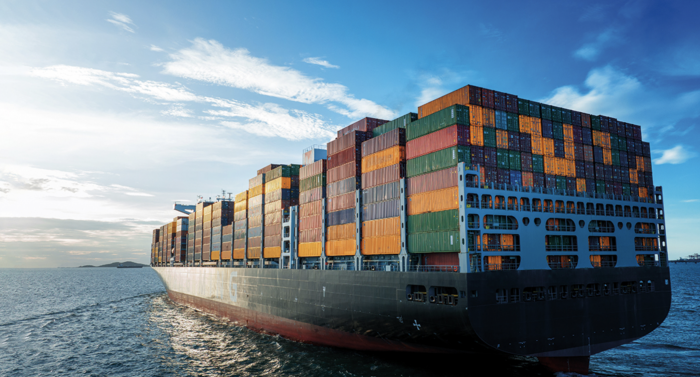sera: THINK BIG – EXHAUST GAS CLEANING FOR LARGE ENGINES

Users of diesel vehicles are familiar with „AdBlue“. The pollutants produced during combustion are usually effectively removed directly in the engine, the exhaust gas drives the turbocharger and then passes through the oxidation catalytic converter. Now the AdBlue – a mixture of synthetic urea and water – is added. Through a chemical reaction, the SCR catalytic converter then converts the nitrogen oxides into water and nitrogen. With the introduction of the EURO 6 emissions standard in 2015, the use of AdBlue in new cars has become mandatory – commercial vehicle owners and drivers have been obliged to do so for much longer.
Industrial and large engines, such as those on ships, are now also subject to increasingly stringent emission guidelines. Engine manufacturers are therefore forced to significantly reduce emissions of both soot particles and nitrogen oxides.
The reduction of nitrogen oxide emissions can be achieved on the one hand through lower-pollution combustion, i.e. an internal engine solution, and on the other hand through exhaust gas post-treatment with an SCR catalytic converter (SCR: selective catalytic reduction). Often, a combination is used – first lower-pollution combustion, then SCR.
The chemical reaction at the SCR catalytic converter is selective, i.e. the nitrogen oxides (NO, NO2) are reduced preferentially, while undesirable side reactions such as the oxidation of sulphur dioxide to sulphur trioxide are largely suppressed.
The reaction requires ammonia (NH3), which is mixed into the exhaust gas.
When urea is used, it must first be decomposed in a thermolysis and subsequent hydrolysis reaction in order to release the ammonia necessary for the SCR reaction.
The dimensions of industrial and large engines make the use of dosing systems possible and necessary. The dosing system from sera is used in exhaust gas post-treatment. The urea solution is dosed from a day tank with a sera dosing pump. The urea is finely atomised by means of a nozzle lance. The urea quantity required for optimum pollutant reduction is specified via a control system by means of a control signal of the iSTEP series metering pump.The dosing of the urea is monitored with pressure and volume flow sensors.
Since optimal atomisation and evaporation of the aqueous urea solution is crucial for the process, the nozzle lance is also supplied with compressed air. The compressed air cools the nozzle lance. Furthermore, the compressed air is used to flush the urea line via a bypass function between the compressed air and the urea line, so that blockages caused by crystallising urea are avoided. In this way, sera products ensure clean air by post-treatment of exhaust gases from industrial and large engines. Once again, sera creates added value for people and the environment.
For more information, please visit: https://seranews.sera-web.com
News Categories
- » NEWS HOME
- » Automation & Robotics
- » Industry 4.0
- » Material Handling
- » Sensors
- » Quality & Testing
- » Machine Vision
- » Laser & Optics
- » Metalworking
- » Motion Control & Drives
- » Hydraulics & Pneumatics
- » Process Industry
- » Renewable Energy
- » Agriculture
- » Home & Office Furniture
- » Environmental Tech









